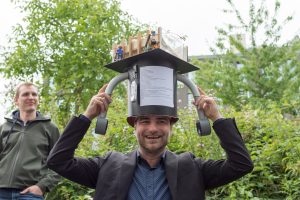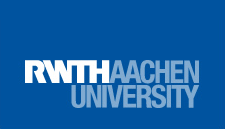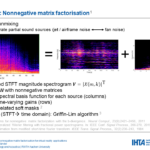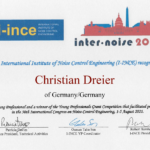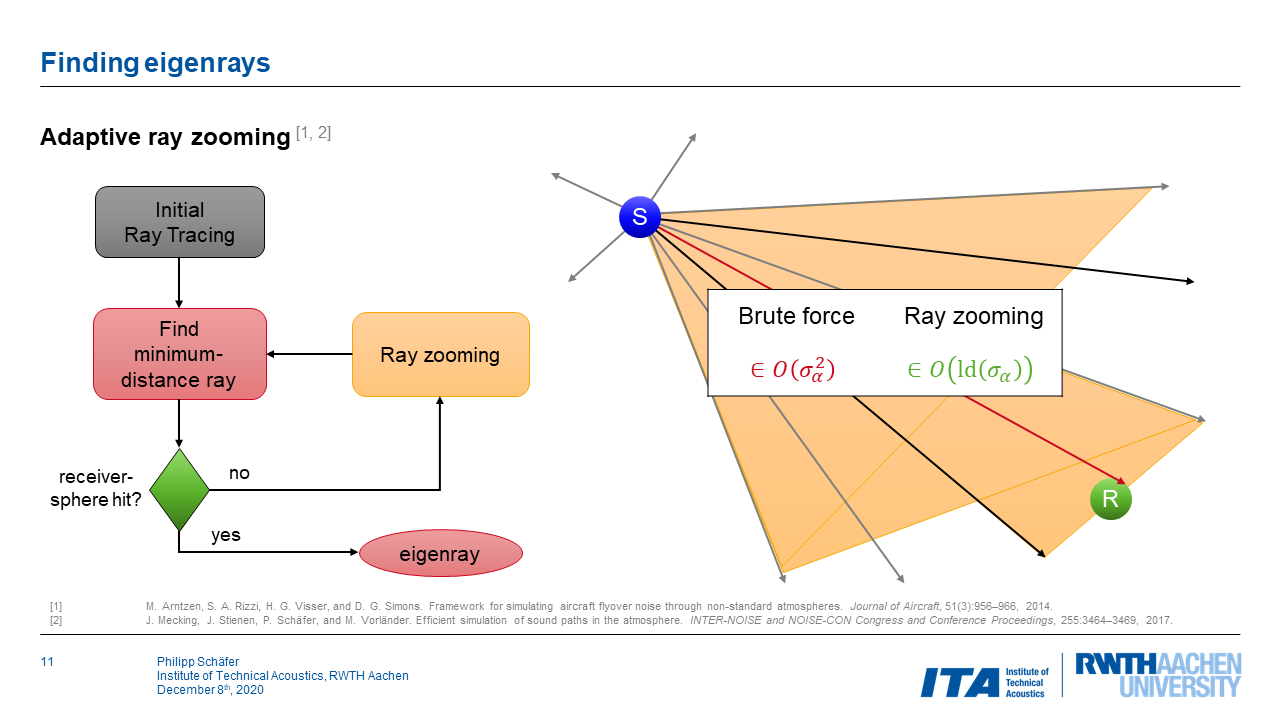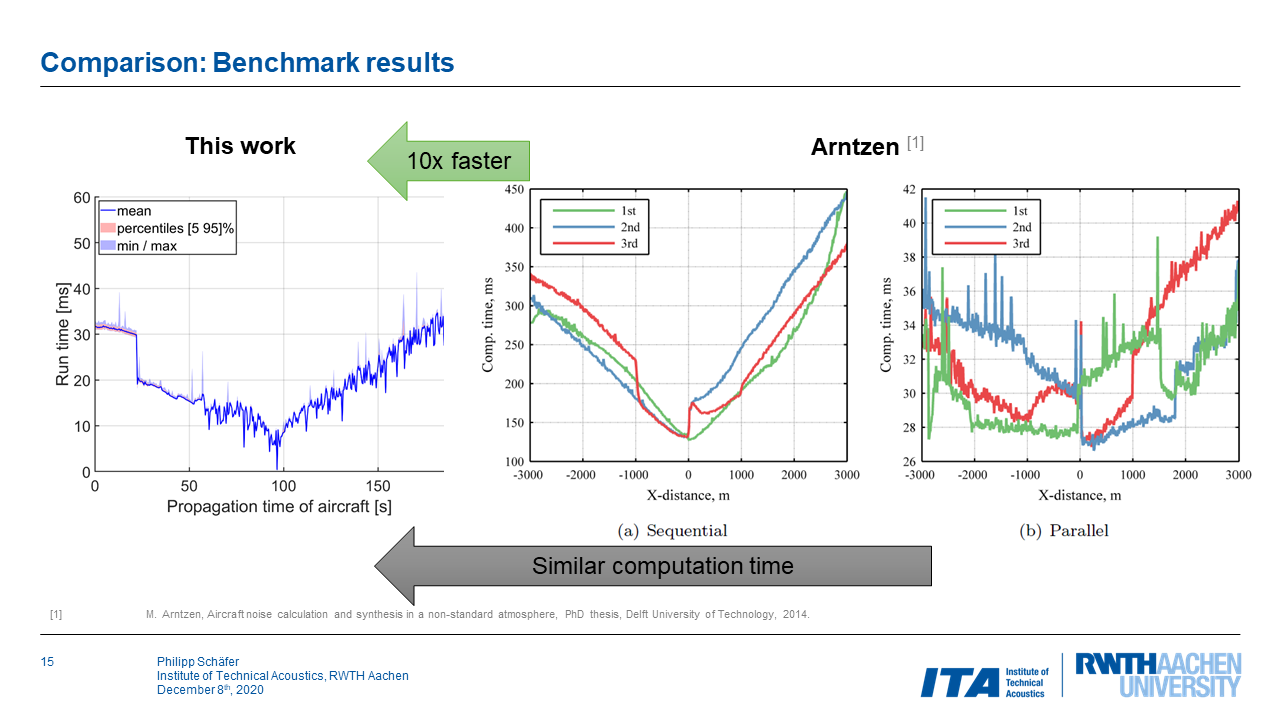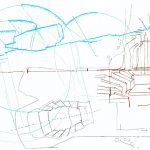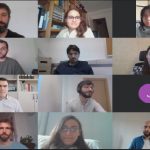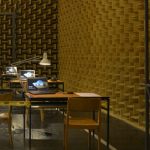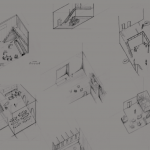Euronoise 2021 – EAA e-Congress
EURONOISE 2021 has started today and of course IHTA is also represented with interesting talks!
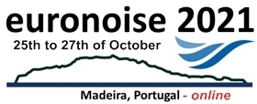
Unfortunately it was not possible to meet in person on Madeira and we are faced with a nicely organized online event. You can find a list of all IHTA’s talks below (The time zone of the program is UTC/GMT+0, Lisbon time zone):
Monday, October 25th, 2021
- 15.40, Room PORTO MONIZ (room 5) – Investigating noise disturbance in open-plan offices using measurements of the room acoustics, and of the sound environment during occupancy – Manuj Yadav; Densil Cabrera; Jungsoo Kim; James Love; Jonothan Holmes; Janina Fels; Richard de Dear;[SS5]
Tuesday, October 26th, 2021
- 9.20, Room PORTO SANTO (room 3) – Challenges in interactive sound insulation auralization – Michael Vorländer;[SS17]
- 11.20, Room PORTO SANTO (room 3) – Voice support from acoustically retroreflective surfaces – Densil Cabrera; Jonothan Holmes1; Shuai Lu1; Mary Rapp1; Manuj Yadav; [SS22]
- 17.20, Room PORTO MONIZ (room 5) – Combined assessment of cognitive and physiological parameters in child-appropriate listening experiments – Karin Loh; Christoph Hoog Antink; Sophie Nolden; Janina Fels;[SS21]
Wednesday, October 27th, 2021
- 14:20, Room FUNCHAL (room 2) – On the Estimation of Directional Decay Times in Reverberation Rooms – Marco Berzborn; Jamilla Balint; Michael Vorländer;[SS9]
- 14:40, Room FUNCHAL (room 2) – Modeling the edge effect for inverse determination of porous absorbers using feed forward neural networks – Mark Müller-Giebeler; Michael Vorländer;[SS9]
- 15:20, Room PORTO MONIZ (room 5) – Eigenfrequency analysis of the vibrating horn in Ultrasonic Metal Welding – Elie Abi Raad; Jose Maria Uribe; Michael Vorländer;[GS29]
More information can be found here: http://www.spacustica.pt/euronoise2021/
Rayleigh Medal for Prof. Michael Vorländer
The Institute for Hearing Technology and Acoustics is proud to announce that Prof. Michael Vorländer recently received the prestigious Rayleigh Medal, the highest award of the Institute of Acoustics. Congratulations!
The Rayleigh Medal is the Institute of Acoustics‘ premier award, awarded without regard to age to persons of undoubted renown for outstanding contributions to acoustics. The medal is named after John William Strutt, Third Baron Rayleigh (1842-1919), a very versatile physicist who conducted both experimental and theoretical research in virtually every branch of the subject. His book The Theory of Sound remains a landmark text in the development of acoustics.
Source: https://www.ioa.org.uk/about-us/awards
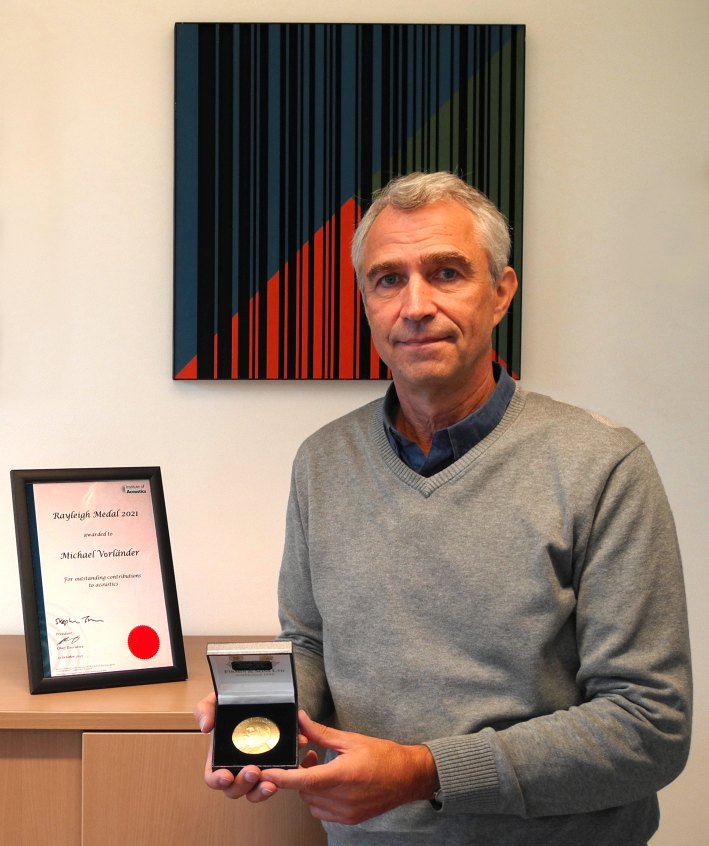
By receiving this award, Michael joins a list of very well-known acousticians such as Manfred Schröder, Hugo Fastl, Leo Beranek and his his predecessor Heinrich Kuttruff, who have also been awarded this medal.
BASH 2021 – Joint Conference on Binaural and Spatial Hearing
The 2nd joint conference on binaural and spatial hearing (BASH) was held on October 7th and 8th, 2021. The meeting took place virtually, featuring talks on behavior, modeling, physiology and virtual reality. On Friday, October 8th, Janina Fels and Carolin Reimers gave a presentation on a paradigm investigating auditory selective attention in a virtual classroom, which has been developed in the context of the project “Evaluating cognitive performance in classroom scenarios using audiovisual virtual reality – ECoClass-VR” . This project is part of the priority program SPP2236 – AUDICTIVE: Auditory Cognition in interactive virtual Environments funded by the Deutsche Forschungsgemeinschaft (DFG) – German Research Foundation. Next to exciting projects, AUDICTIVE also organizes workshops for the participating researchers, such as a visualization workshop offered by Martina Grigoleit, which has already been made use of during the BASH.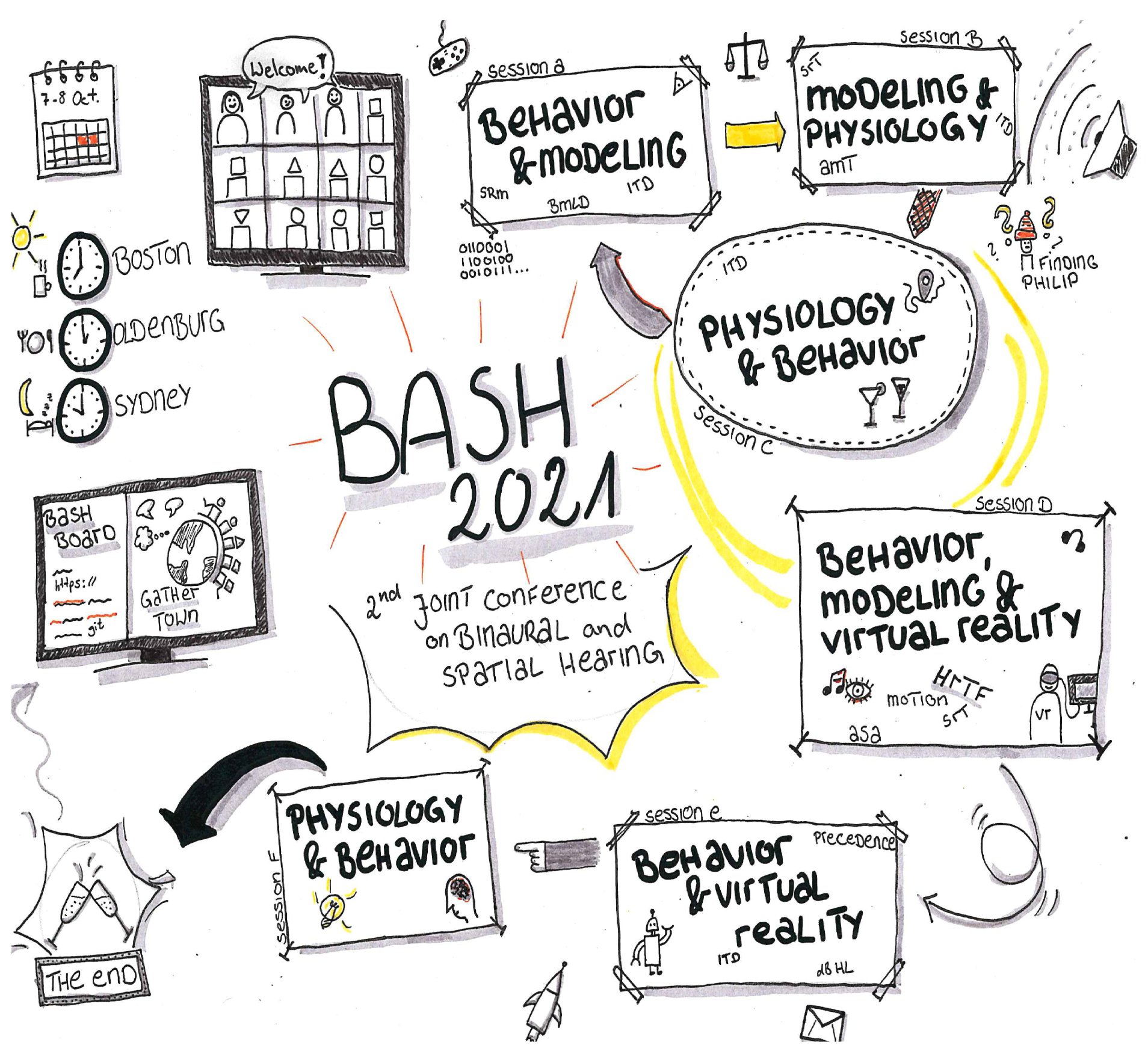
Young Professionals Grant at inter-noise 2021
From August 1st, 2021 until August 5th, 2021, the 50th International Congress and Exposition on Noise Control Engineering (inter-noise 2021) was held in online mode (originally it was planned to take place in Washington, DC).

Our PhD student Christian Dreier participated in this event and presented the paper Sound source modelling by nonnegative matrix factorisation for virtual reality applications. Related to this contribution, he was selected as a winner of the Young Professionals Grant Competition by the Institute of Noise Control Engineering (I-INCE) – congratulations to Christian for this award!
- Remote sensing of aircraft noise
- Source separation
- Certificate of the award
Annual Meeting of the Priority Program AUDICTIVE
On September 16th, 2021 we met online for our annual meeting of our priority program SPP2236 – AUDICTIVE (www.spp2236-audictive.de): Auditory Cognition in interactive virtual Environments funded by the Deutsche Forschungsgemeinschaft (DFG) – German Research Foundation.
The day was very inspiring and the basis for special interests groups and lab visits could be established! Special thanks go to our moderator Ellen Gürtler.
We are looking forward to the upcoming months full of exciting collaborations!
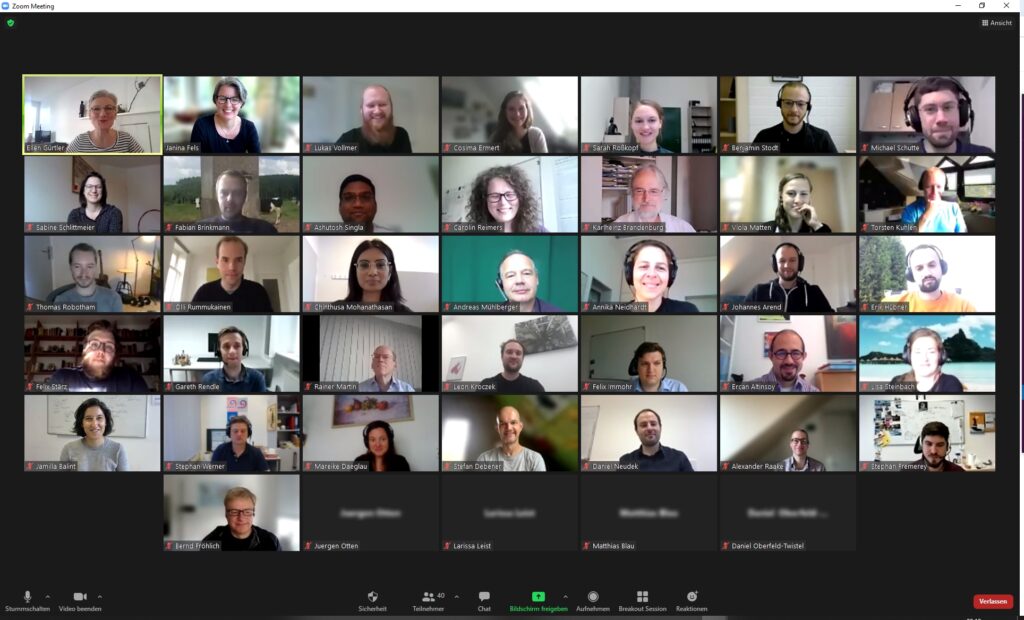
Screenshot of the Zoom Meeting
DAGA 2021 poster award
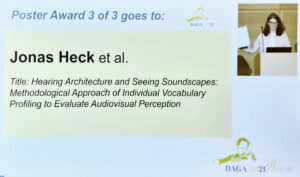 At the DAGA Acoustics Annual Conference 2021, one of the poster awards has been given to the work presented by Jonas Heck, Josep Llorca-Bofí and Michael Vorländer, with the title: Hearing Architecture and Seeing Soundscapes: Methodological Approach of Individual Vocabulary Profiling to Evaluate Audiovisual Perception.
At the DAGA Acoustics Annual Conference 2021, one of the poster awards has been given to the work presented by Jonas Heck, Josep Llorca-Bofí and Michael Vorländer, with the title: Hearing Architecture and Seeing Soundscapes: Methodological Approach of Individual Vocabulary Profiling to Evaluate Audiovisual Perception.
Congratulations!
DAGA 2021 – Die Jahrestagung für Akustik
Nachdem im Jahr 2020 die in Hannover geplante DAGA-Tagung ausfallen musste, wurde die DAGA 2021 in den Monat August geschoben. Die Hoffnung, dass die Pandemie die Tagungsdurchführung nichtmehr beeinflusst, hat sich nicht erfüllt, aber immerhin kann die in Wien, vom 15. August bis zum 18. August 2021, stattfindene Konferenz als Hybrid-Veranstaltung durchgeführt werden, d.h. eine Teilnahme ist sowohl vor Ort, als auch Online möglich. Aufgrund der Anweisung der RWTH Aachen, Dienstreisen soweit es geht zu vermeiden, nehmen alle IHTA-Beschäftigten online an der Tagung teil und verzichten somit auf die Reise nach Wien.
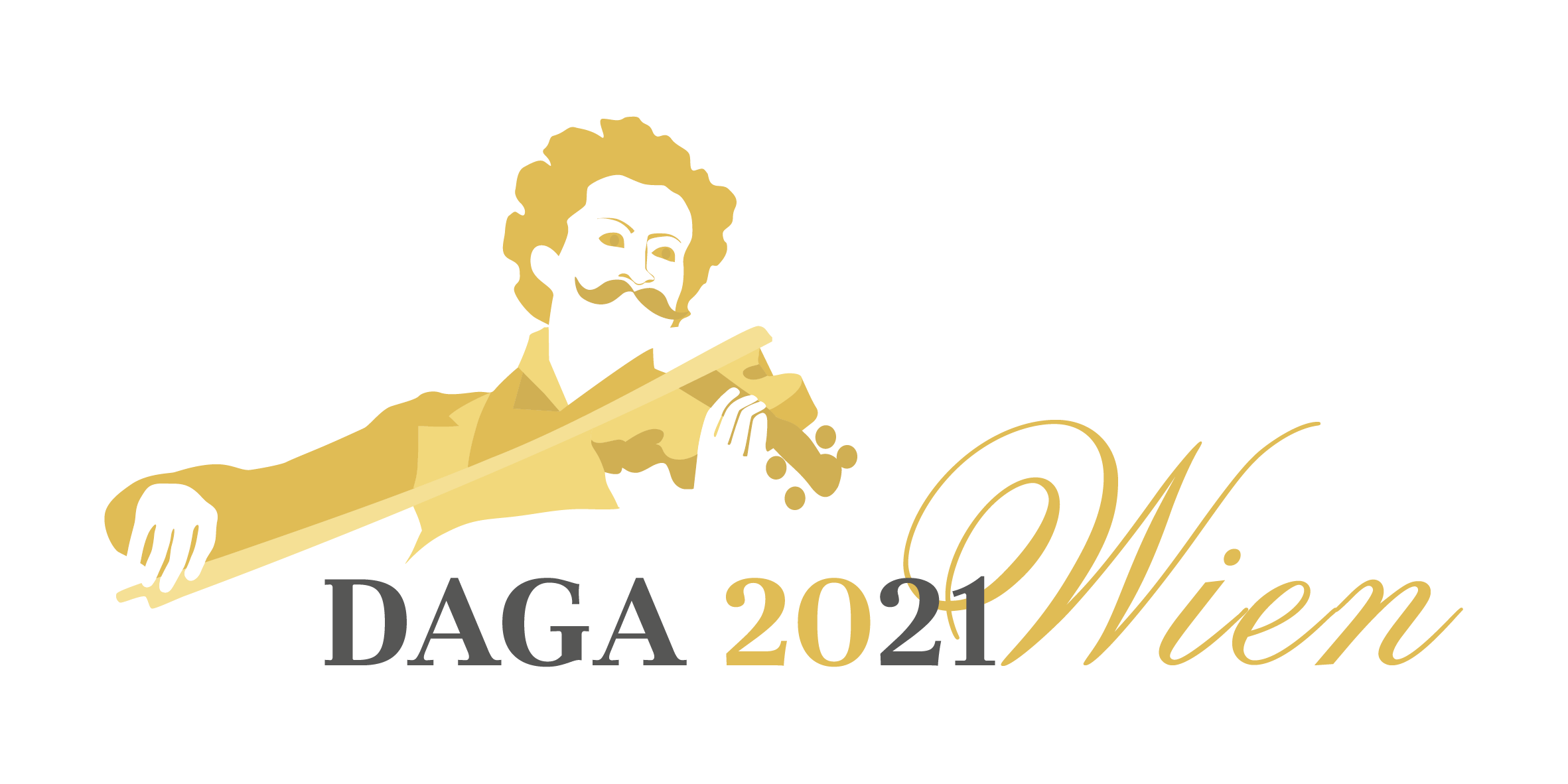
Die Tagung beginnt am Sonntag mit drei Vorkolloquien, die meisten Sitzungen finden jedoch an den drei Haupttagen von Montag bis Mittwoch statt. Insgesamt ist das Institut für Hörtechnik und Akustik an 27 wissenschaftlichen Beiträgen beteiligt (21 Vorträge und 6 Poster).
Vortrag am Montag:
| Jonathan Ehret, Lukas Aspöck, Andrea Bönsch, Janina Fels, Torsten W. Kuhlen | Speech Source Directivity for Embodied Conversational Agents |
Vorträge am Dienstag:
Vorträge am Mittwoch:
Poster:
| Marco Berzborn, Fabian Brinkmann, Simon Kersten, Kai Jurgeit | pyfar: Python Packages for Acoustics Research |
| Anne Heimes, Michael Vorländer | A framework to conduct psychoacoustic experiments in virtual reality |
| Jonas Heck, Josep Llorca-Bofí, Michael Vorländer | Hearing Architecture and Seeing Soundscapes: Methodological Approach of Individual Vocabulary Profiling to Evaluate Audiovisual Perception |
| Lukas Aspöck, Jonathan Ehret, Stefan Baumann, Andrea Bönsch, Christine T. Röhr, Martine Grice, Torsten W. Kuhlen, Janina Fels | Prosodic and visual naturalness of dialogs presented by conversational virtual agents |
| Isabel Schiller, Jan Alber, Lukas Aspöck, Chinthusa Mohanathasan, Linda Wetzel, Sabine Schlittmeier | Text-related immersion for varying auditory background scenes |
| Karin Loh, Julian Burger, Lukas Aspöck, Janina Fels | EduRA database: room models based on room acoustic measurements in primary and preschools |
Eine Übersicht über alle weiteren Beiträge der Tagung befinden sich in der der DAGA 2021 App.
New chairs for the EAA Young Acousticians Network (YAN) from IHTA
After many years of hard and fruitful work to maintain and to develop the products of European Acoustics Association, EAA Young Acousticians Network, YAN, Mathieu Gaborit is stepping back as the chair of the EAA YAN. In April this year, Elie Abi Raad has taken over the chair with Karin Loh as his co-chair. They will continue to evolve the community and presence of the YAN to provide an enriched network for young researchers within and beyond the European Acoustics Association (EAA).
We would like to thank Mathieu Gaborit and his team for the amazing work and congratulate Elie and Karin to their new challenges.
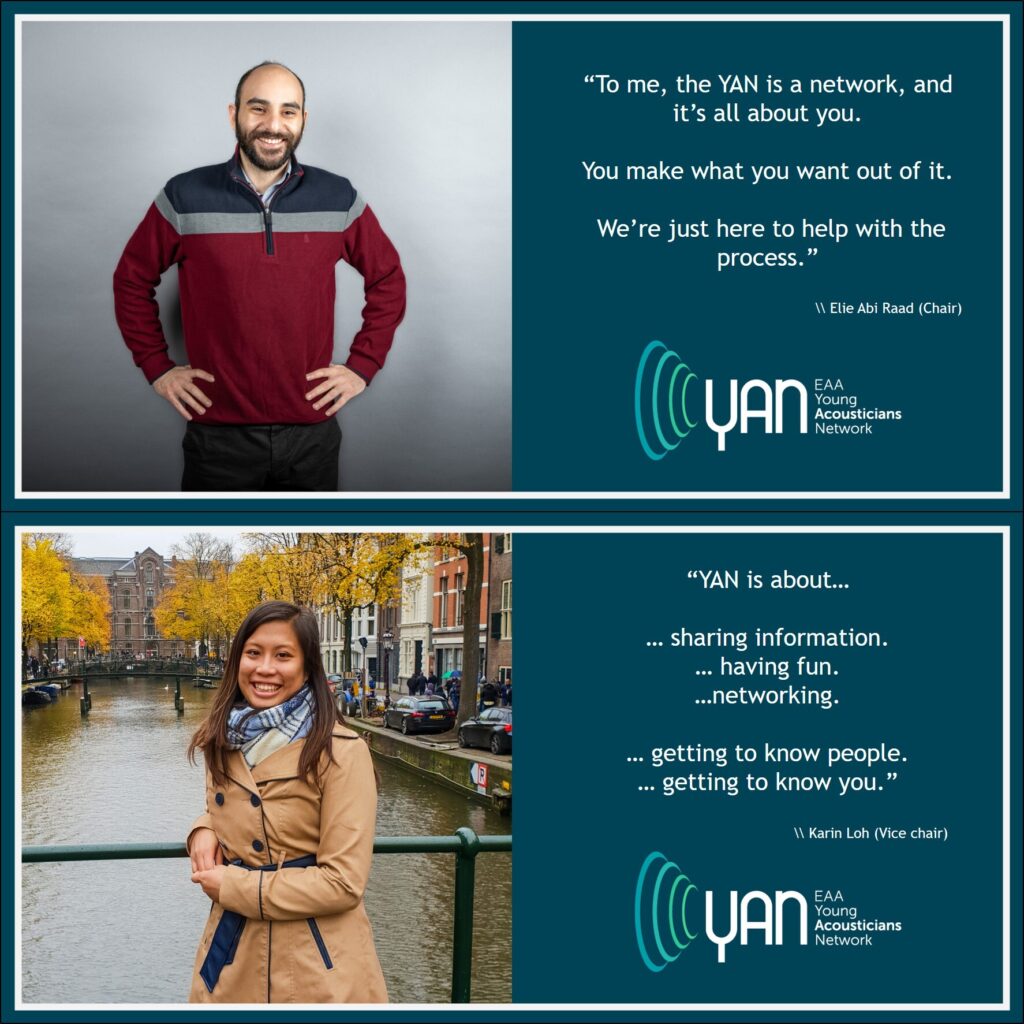
Award for family friendly leadership for Michael Vorländer
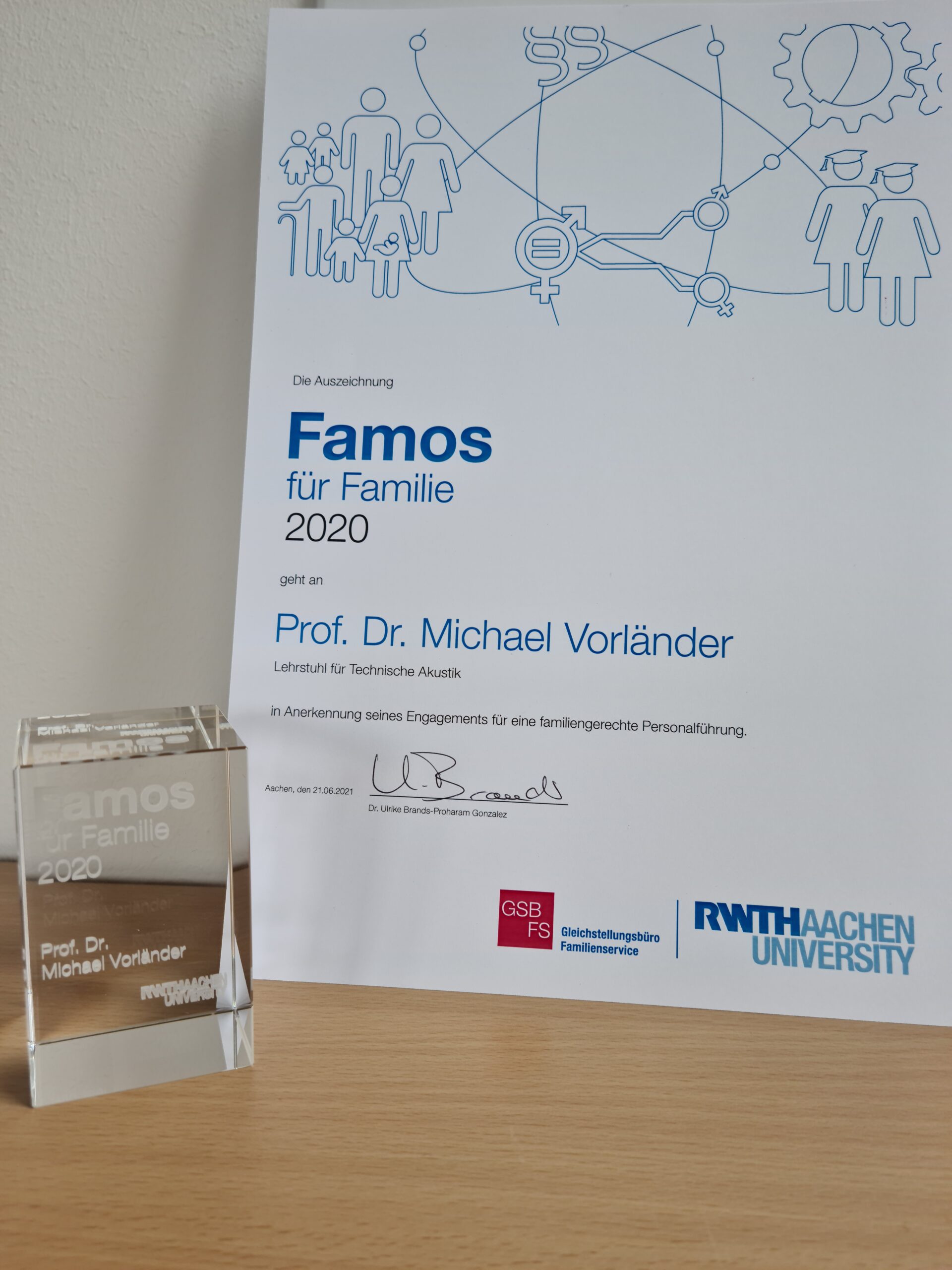
Michael Vorländer was honored the award for family friendly leadership „FAMOS 2020“!
He was nominated by his employees to honor the creation of a family friendly working atmosphere and his pragmatic solutions to urgent and every day problems.
Due to the pandemic the award ceremony was postponed to the 21st of june this year together with price winners from 2021.
More informaition on the award, the ceremony and a short video presenting the award winner can be found here.
Computational Acoustics Early Career Presenter Award
The contribution „Ray Tracing for efficient simulation of curved sound propagation paths: Towards real-time auralization of aircraft noise“ presented by our researcher Philipp Schäfer at the ASA Acoustics Virtually Everywhere Meeting in December 2020 was honored with the Computational Acoustics Early Career Presenter Award by the ASA.
In this work, the concept of aircraft noise auralization was presented and
evaluated with respect to the computational effort. A demonstration of the implemented aircraft noise auralization is included in this YouTube video.
Congratulations to Philipp for this prestigious award!
The ITA-Toolbox COMSOL interface
Acoustic simulations become a more and more important toolset for industry and research. For a few years now, our institute uses COMSOL Multiphysics for numerical simulations, e.g. FEM and BEM, in various fields of acoustics. For proper processing of simulation results, we usually rely on MATLAB and the ITA-Toolbox. Although COMSOL provides a MATLAB interface (LiveLink), using this for advanced processing is not straightforward. With this in mind, a user-friendly interface between the ITA-Toolbox and COMSOL was designed.
 Key features
Key features
- Starting the COMSOL server and connecting Matlab
- A rich class structure representing a COMSOL model and its model nodes (geometry, physics, …)
- Evaluation of FEM / BEM results at arbitrary points using the itaResult format without writing the results to hard disk
- Quickly applying complex-valued, frequency-dependent data to COMSOL model (itaResult -> COMSOL interpolation)
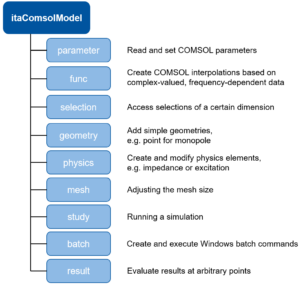
Class structure of the ITA-Toolbox COMSOL interface
The class structure makes the usage of this interface intuitive and easily extendable. Similar to the actual COMSOL model, the itaComsolModel class contains nodes representing the geometry, physics, study and so on. Each node comes with functions to interact with the respective node. However, the current toolset also allows applying significant changes your model using a single line of Matlab code. For example, the user can apply a user-defined impedance to a pre-defined boundary selection or create a monopole source with a user-defined frequency response. In this case, multiple of those nodes are modified (e.g. geometry and physics).
If you are interested, the interface is part of the ITA-Toolbox, that can be downloaded or cloned from our Git repository. The related files can be found in the folder “ITA-Toolbox\applications\SoundFieldSimulation\Comsol\”. This also contains a set of small demos for getting started.
PAADtalks!
PAADtalks! are here: the interdisciplinary colloquium organized by the Person-focused Analysis of Architectural Design – PAAD group in collaboration with the Human Technolgy Center at the RWTH Aachen University. This series of academic lectures gathers humanities and technological approaches to architecture, and constructs collaboration networks for upcoming actions. There is no complete way to approach a person-focused analysis of architecture without an integral view. PAADtalks! spreads architectural research from the broad sense, beyond any reductionism or utopian pretension. More information through this email.
Lautenbach: The acoustical design process of a classical concert hall
June 16th 2023
Kahle: The Concert Hall – a machine for music? Or how to integrate acoustic design into architecture
June 3rd 2022
Lachenmayr: Applied room acoustics – How to build a concert hall
Jan 14th 2022
Chatterjee: The neuroaesthetics of architectural spaces
October 4th 2021
Kang: Designing soundscape in open public spaces: a framework and potentials
July 2nd 2021
Psarra: Contextual sensibility and influence in the architecture of Carlo Scarpa
May 21st 2021
Priority Program AUDICTIVE – Kick-Off-Meeting
Awesome day (on April 27, 2021) with the virtual Kick-Off-Meeting from the priority program SPP2236-AUDICTIVE: Auditory Cognition in interactive virtual Environments funded by the German Research Foundation (DFG).
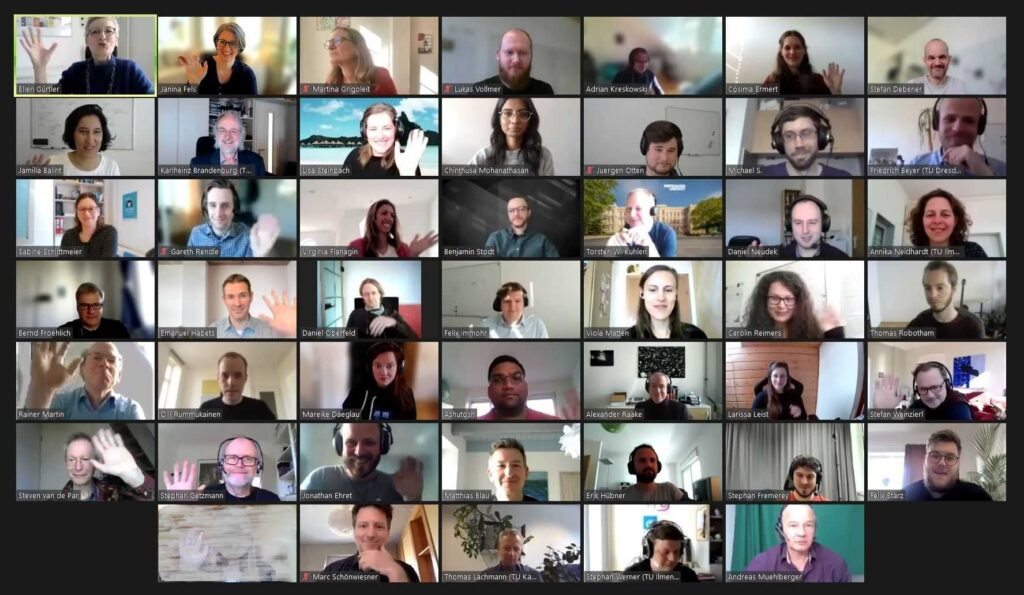
Group picture of the AUDICTIVE participants – Zoom
We are very happy that we had a very interactive and successful meeting with great collaborators and partners within AUDICTIVE. Special thanks go to our moderator Ellen Gürtler and the graphic recorder Martina Grigoleit, who made this day very inspiring and extraordinary.
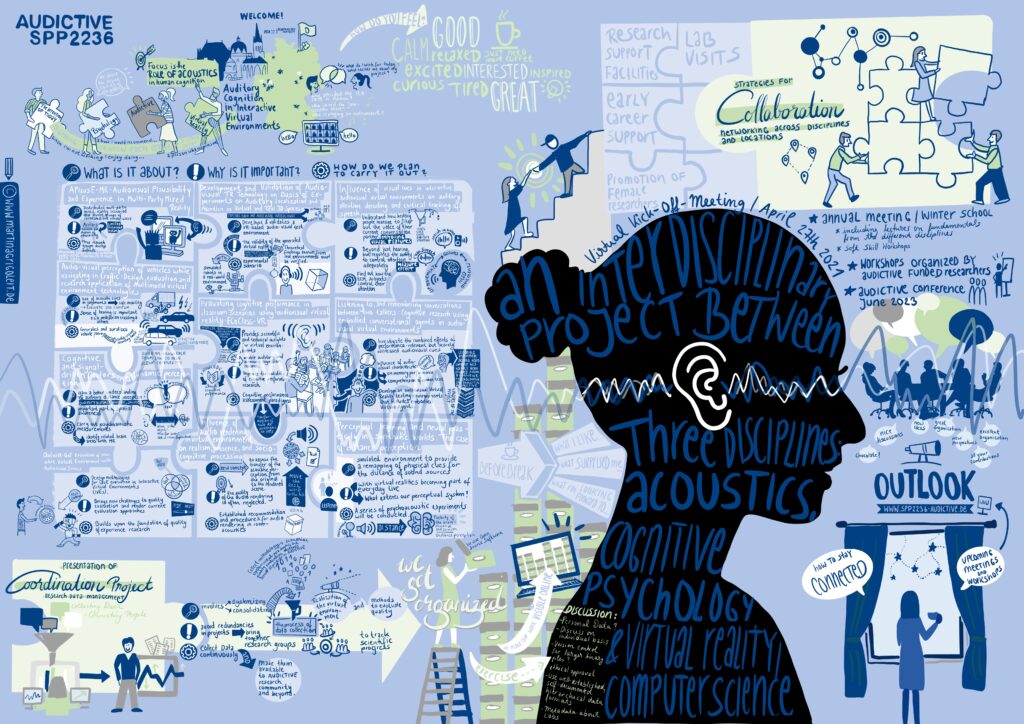
Graphic Recording of the Meeting by Martina Grigoleit
Brigitte-Gilles-Preis 2020
Die Initiative „Die interaktive Erlebniswelt der Akustik für große und kleine Kinder“ erhält den Brigitte-Gilles-Preis 2020 in der externen Kategorie. Koordiniert und betreut wird die Initiative vom Lehrstuhl für Hörtechnik und Akustik (IHTA).
In insgesamt vier Kategorien verlieh die RWTH Aachen den mit bis zu 2.500 Euro dotierten Brigitte-Gilles-Preis 2020. Er honoriert Projekte, Initiativen und eine Abschlussarbeit, welche die Bedingungen für Studium, Lehre und Forschung von Frauen an der Hochschule verbessern. Somit tragen sie dazu bei, die Zahl von Wissenschaftlerinnen und Studentinnen in Studiengängen mit geringem Frauenanteil zu erhöhen. (zur Pressemeldung der RWTH Aachen University)
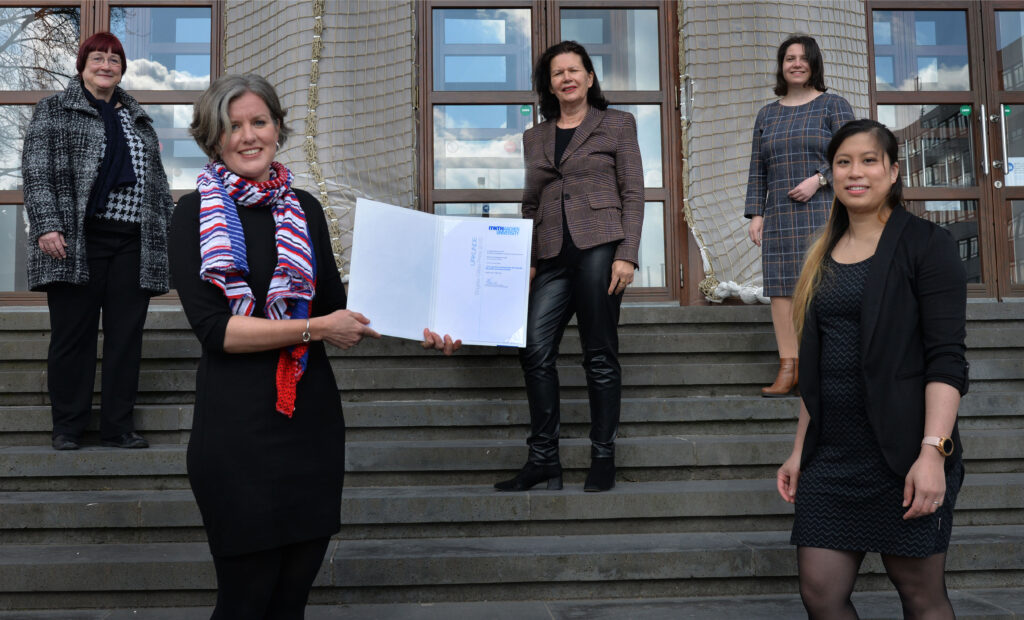
Professorin Doris Klee (Mitte), Prorektorin für Personal und wissenschaftlichen Nachwuchs an der RWTH, überreichte den Brigitte-Gilles-Preis 2020 an Karin Loh und Janina Fels. (Foto: Andreas Schmitter)
Die externe Kategorie würdigt Projekte, die das Interesse von Schülerinnen an Mathematik, Informatik, Naturwissenschaften und Technik – kurz MINT genannt – fördern. Die Auszeichnung erhielt in diesem Jahr die Initiative „Die interaktive Erlebniswelt der Akustik für große und kleine Kinder“. Hierbei wurden Konzepte entwickelt, die Mädchen zwischen drei und zwölf Jahren das spielerische und interaktive Erkunden und Erlernen des Hörens und der Akustik ermöglichen. Die Koordination und Betreuung erfolgt durch Karin Loh vom“ Lehrstuhl und Institut für Hörtechnik und Akustik “ und wird geleitet von Professorin Janina Fels. (zur Pressemeldung der RWTH Aachen University)
Das „female Network Melaten“ durfte den Brigitte-Gilles-Preis 2020 in der internen Kategorie entgegennehmen. Zudem wurde das Projekt „Hlumani – der Zukunft eine gerechte Chance geben“ mit einem Sonderpreis ausgezeichnet sowie Dr. Anna Stertz für ihre Abschlussarbeit.
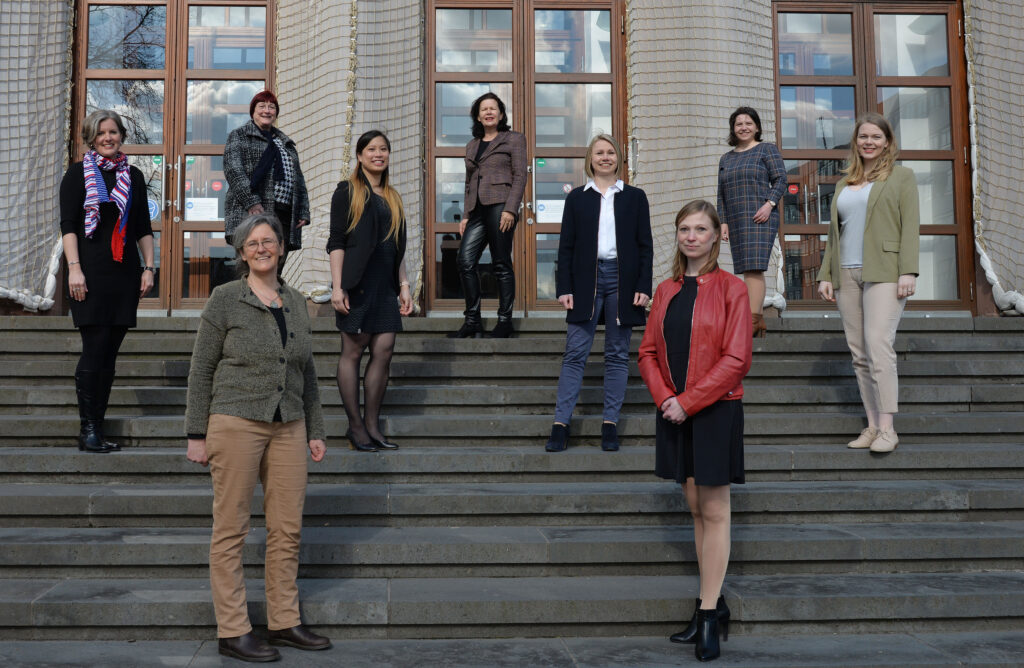
Professorin Doris Klee (hinten Mitte), Prorektorin für Personal und wissenschaftlichen Nachwuchs an der RWTH, überreichte die Brigitte-Gilles-Preise 2020. (Foto: Andreas Schmitter)
Das IHTA gratuliert allen Preisträgerinnen sehr herzlich!
New chairs and council members for the EAA TC on Psychological and Physiological Acoustics
During this year’s e-Forum Acusticum 2020, the EAA Technical Committee on Psychological and Physiological (TC P&P) Acoustics has elected their new (co-) chairs and council members for the next three years.
Univ.-Prof. Dr.-Ing Janina Fels, RWTH Aachen will take over the co-chair. The ITA team extends warm congratulations to Prof. Fels on her election!
The TC P&P (https://euracoustics.org/technical-committees/tc-on-psychological-and-physiological-acoustics) connects European-wide researchers of psychophysics and physiology of the auditory system, and modellers using an approach based on neural structures in the auditory system (i.e., use a systems approach).
The new elected members in the TC P&P are
- Piotr Majdak, Vienna (TC chair)
- Janina Fels, Aachen (TC co-chair)
- TC council members:
-
-
Sarah Verhulst, Ghent
-
Mathieu Lavandier, Lyon
-
Andre Fiebig, Berlin
-
Armin Taghipour, Luzern
-
Armin Kohlrausch, Eindhoven
-
W3 Lehrstuhl für Hörtechnik und Akustik
Am 13. November 2020 wurde von Rektor der RWTH, Prof. Dr. rer. nat. Ulrich Rüdiger, die Urkunde zur Ernennung als W3-Professorin an Prof. Dr.-Ing. Janina Fels überreicht. Damit wird das bisher von ihr geleitete Lehr- und Forschungsgebiet für Medizinische Akustik zum Lehrstuhl für Hörtechnik und Akustik (Chair for Hearing Technology and Acoustics).
Das gesamte Institut für Technische Akustik freut sich über diese Entwicklung und gratuliert sehr herzlich.
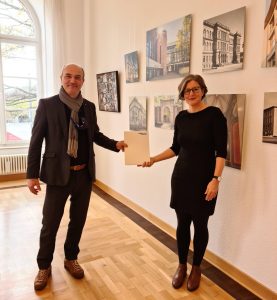
PAAD research group emerges at the Institute of Technical Acoustics
The Person-focused Analysis of Architectural Design – PAAD group will be born in January 2021, integrated in the Institute of Technical Acoustics at RWTH Aachen University. The group is constituted by Dr. Josep Llorca-Bofí and one full-time doctoral candidate and is funded for a period of four years by the RWTH Junior Principal Investigator Fellowship.
The visionary approach is to offer new knowledge about architect’s design implications on people’s perception, by passing over the specific languages of other research areas, such as acoustics.
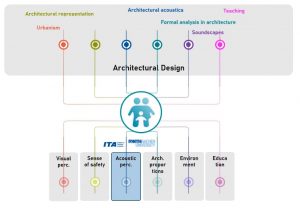
- Cross-disciplinary Spatial Analysis
- Categorization of the Architectural Design
- Visualization and Auralization tools
Doctoral Award 2020 for Dr. Josep Llorca-Bofí
For his excellent PhD thesis, ITA’s postdoctoral researcher Dr. Josep Llorca-Bofí received the Special Doctoral Award 2020 given by the Universitat Politècnica de Catalunya (UPC). The award was presented to him and 30 other doctoral degree holders in a virtual event on November 6th, 2020. In this edition the awards are given to doctoral degree holders who obtained a cum laude distinction for the defence of their thesis in the 2017-2018 academic year.
Josep’s thesis with the title
“The generative, analytic and instructional capacities of sound in architecture:
fundamentals, tools and evaluation of a design methodology“
connects the fields of architecture, acoustics and engineering and is published Open Access.
The ITA team congratulates Josep to this special award!
- Award slide during the ceremony
- Award winners during virtual ceremony.
- Example from thesis: Setup for architectural listening experiments
- Example from thesis: Drawings made by test subjects based on perceived acoustic spaces.
DFG bewilligt zehn interdisziplinäre Projekte im Schwerpunktprogramm AUDICTIVE
Im Oktober 2020 hat die DFG (Deutsche Forschungsgemeinschaft) zehn interdisziplinäre Projekte und das Koordinationsprojekt zur ersten Phase im Schwerpunktprogramm SPP2236 AUDICTIVE bewilligt.
Drei Projekte wurden mit der Beteiligung der Sprecherin Prof. Dr.-Ing. Janina Fels bewilligt:
- das Koordinationsprojekt, in dem der interdisziplinäre Austausch und das Forschungsdatenmanagement im Fokus stehen
- das Projekt „Listening to, and remembering conversations between two talkers: Cognitive research using embodied conversational agents in audiovisual virtual environments„, welches ein gemeinsamer Antrag mit Prof. Dr. Torsten W. Kuhlen und Prof. Dr. Sabine J. Schlittmeier von der RWTH Aachen University ist und
- das Projekt „Evaluating cognitive performance in classroom scenarios using audiovisual virtual reality – ECoClass-VR„, welches ein gemeinsamer Antrag mit Prof. Dr.-Ing. Alexander Raake, TU Ilmenau und apl. Prof. Dr. Maria Klatte, TU Kaiserslautern ist.
Eine Übersicht über alle Projekte kann auf der Projektwebseite zum Schwerpunktprogramm (http://www.spp2236-audictive.de) eingesehen werden.
Wir freuen uns auf die Zusammenarbeit im Schwerpunktprogramm AUDICTIVE.
Promotionsprüfung Dipl.-Ing. Lukas Aspöck
Am 10. Juli 2020 hat Herr Lukas Aspöck seine mündliche Promotionsprüfung erfolgreich abgeschlossen.
Herr Aspöck promovierte über das Thema:
„Validation of room acoustic simulation models“
Abstract:
Already in ancient times, the goal existed to design appropriate environments to transport acoustic signals from a sound source to an audience. Strongly connected to this is the interest to understand room acoustic effects and, in the best case, to accurately predict them. This is of particular relevance today in prestigious projects such as the construction of concert halls, but is also of great importance in everyday life, for example in public buildings. Room acoustic simulations based on the concepts of geometric acoustics have been developed for such purposes for more than 50 years and have been extensively investigated. However, there is still insufficient knowledge about the uncertainty and validity of the results of the room acoustic simulations used today. In addition, many highly simplified simulation models are often used without questioning the validity of the results.
In order to offer developers and researchers a possibility to comprehensively validate the results of their room acoustic simulation, a database with eleven different acoustic scenes was developed, documented and published. The scenes cover both simple environments, where individual acoustic effects such as reflection or diffraction are isolated, and complex spatial situations such as a concert hall. In addition to a detailed description and the definition of input data, acoustic measurements were carried out for all scenes, which serve as reference for the simulations.
Furthermore, a study is presented which was designed following the concept of three previously conducted round robin experiments. Here, the simulation results of up to six participants, who were not informed about measurement results in advance, are compared with each other and with the results of the corresponding measurements. The evaluation of the results for the simple scenes reveals various weaknesses of the geometric acoustics, but in the case of the complex scenes it nonetheless shows acceptable results in the medium frequency range. In further investigations it was determined how much room acoustic simulation results deviate from measurements if the user knows the measurement results beforehand and input data of the simulation is adjusted manually or systematically. From these results it can be concluded which deviations from actual, measured values can be expected in the room acoustic simulation of both unknown and known rooms. Furthermore, this work provides a basis for improvements in the field of geometrical acoustics simulation models and with respect to the determination and selection of correct input data for the simulation.
Das ITA gratuliert sehr herzlich!!
